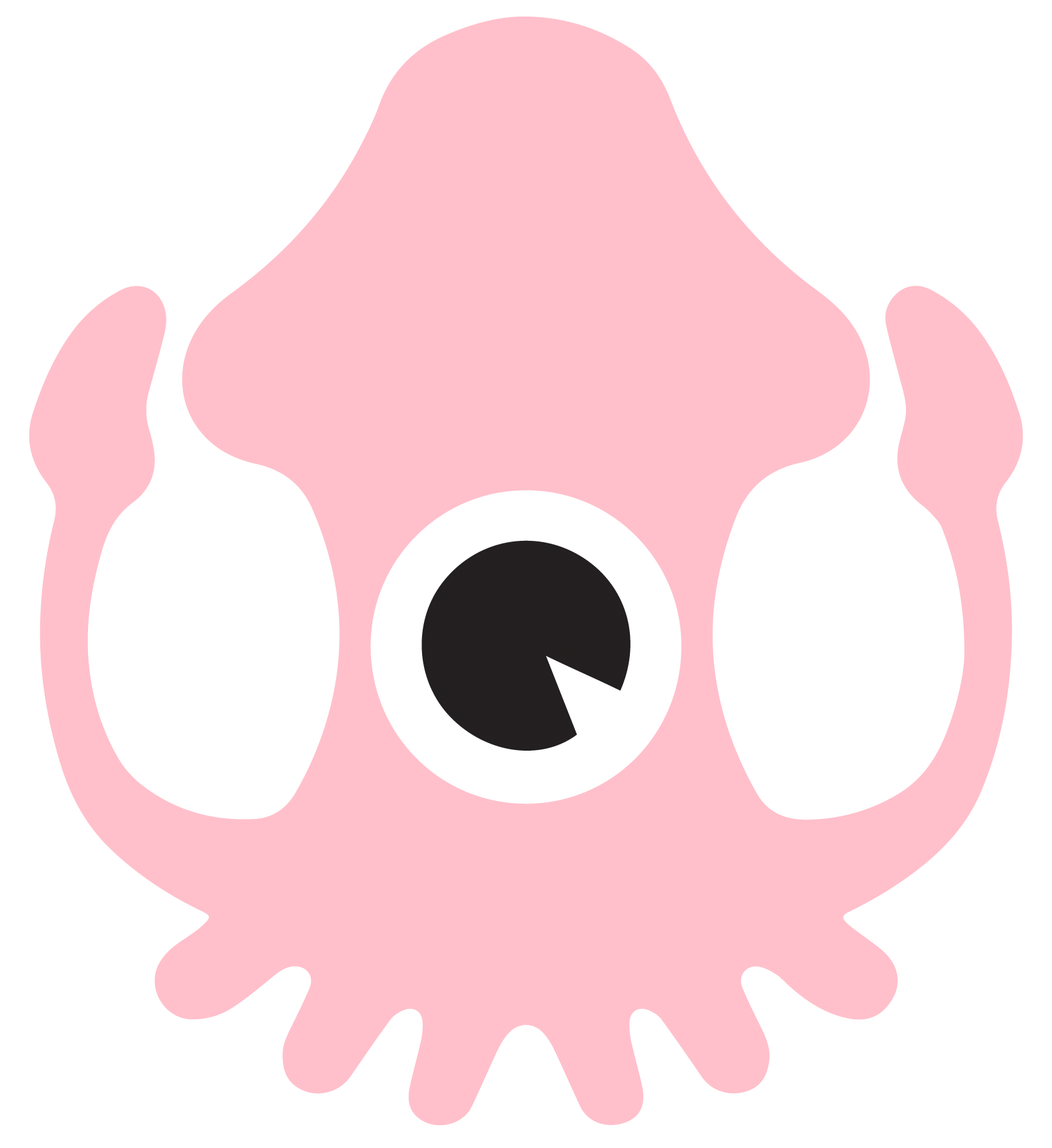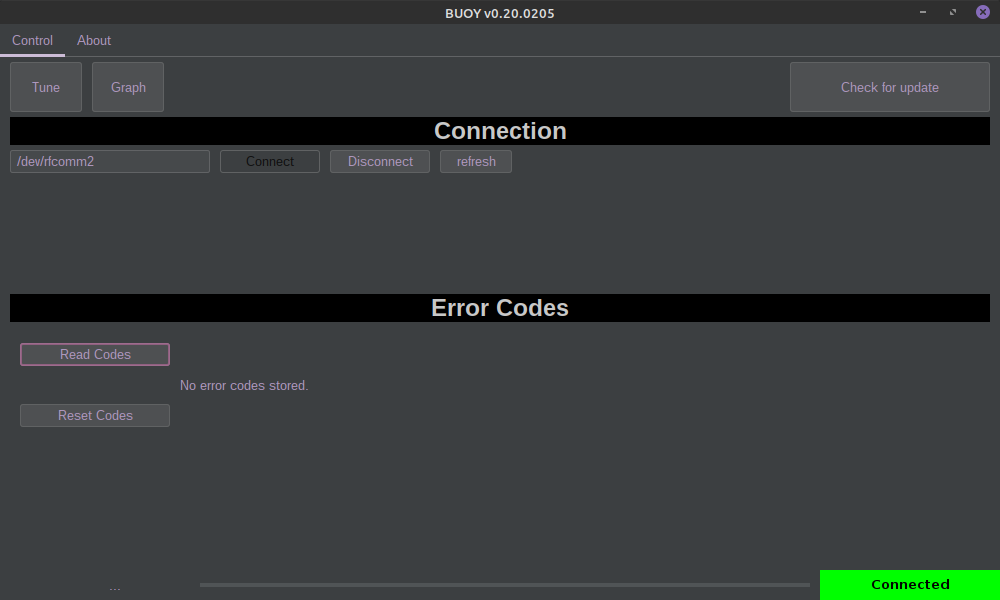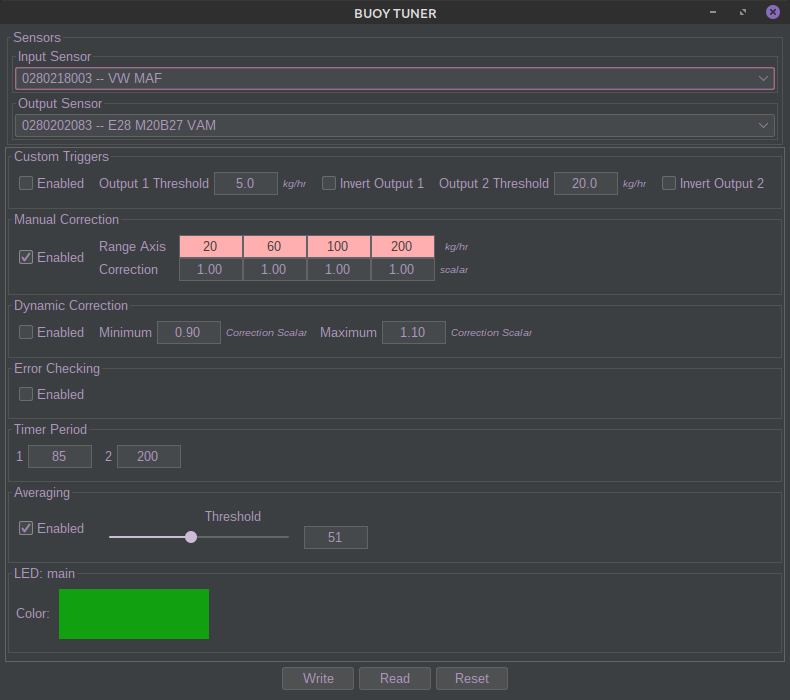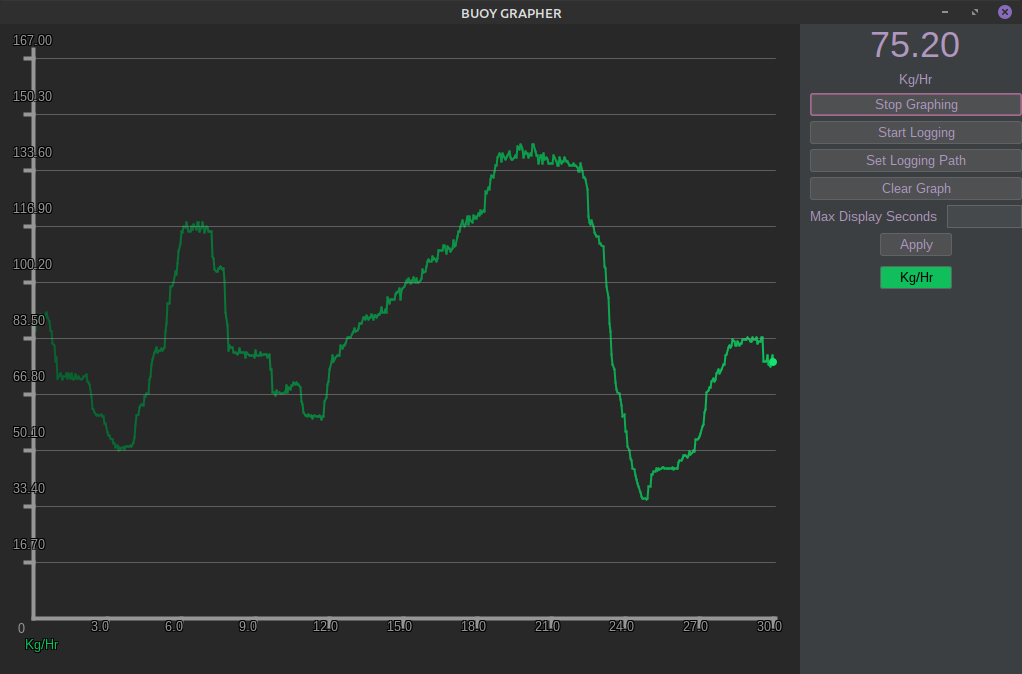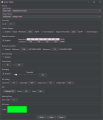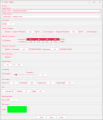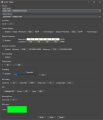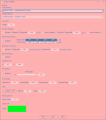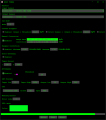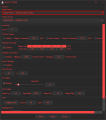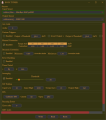SSSICK/BUOY/Usage/SW0 20
Installation
There is no system-wide installation necessary. This was developed as a drop-and-go program that can be run from anywhere on Windows or Linux machines. All you need to do is extract the contents of the compressed folder to any location, then run the executable. That's it!
Usage
Main Window
Top Bar
There are three buttons in the top-bar. "Tune" "Graph" and "Check for updates". "Tune" opens the tuning window, "Graph" opens the graphing window, and "Check for updates" will check our server for program updates.
Connection
You will configure your connection and connect to your SSSMCK from here. The drop-down menu displays available devices and ports. Select the port at which your unit is connected, and click "connect" to connect. In Windows you should see "SSSMCK". In Linux you will see the corresponding raw device path (e.g. "/dev/tty9" or "dev/rfcommX" if using rfcomm to connect).
Click "disconnect" while connected in order to disconnect.
Click "refresh" to update the drop-down with currently available devices and ports.
There can occasionally be issues releasing the port when disconnecting, so if you have trouble trying to reconnect it can be fixed by closing the application and opening it again.
Error Codes
The SSSMCK can store running error codes for any number of things, such as out of specification sensors, power supply issues, problems reading or writing from internal memory, and even self-tests to verify the true output from the SSSMCK is what it should be.
If your SSSMCK's LED is red (and you have not set it to red through the custom LED color section), then your SSSMCK has a stored error code. Click "Read Codes" to display which codes your unit had stored. Click "Clear Codes" to clear any stored codes.
Tune
From this window you will control the finer points of your SSSMCK through tuning.
Read more on the Tuning page!
You can also perform a full reset of your SSSMCK by clicking "Reset". This will return it to default firmware values. Do this if you have made many changes and it just doesn't seem to be going in the right direction, or if you are experiencing any trouble.
Graph
From this window you can display, graph, and log airflow and air temp (on HW R020 and newer) values.
Airflow Display
Airflow is displayed on both the graph and on the top-right corner of the window in large text to make for easy reading.
Start Graphing
To start showing and graphing, click "Start Graphing".
Start Logging
To log what is being graphed, click "Start Logging".
Set Logging Path
You can set a custom save location for your logs by clicking "Set Logging Path". If you do not set a custom location, your logs will automatically be saved inside a folder titled "logs" within the Buoy folder.
Clear Graph
If you want to clear the graph and start with a fresh canvas, click "Clear Graph".
En/Disable Powersave
While the graphing has been optimized over time (it should use less than 3% CPU on most modern processors), CPU load can be further reduced if running on limited hardware like a raspberry pi or with limited mobile battery. For example, an Intel i5 8350u will handle a standard "Line" graph at about 1.2-2.3% CPU. With powersave mode active, it should handle this graph at about 0.7-0.9% CPU.
For a laptop with an Intel i5 8350u, these are expected *peak* CPU loads (powersave disabled / enabled), though average CPU load is lower:
- Line: 2.1% / 1.3%
- Point: 4.2% / 1.2%
- Fill: 2.5% / 1.5%
- Circle: 1.8% / 0.5%
Max Display Seconds
You can change how many seconds of data to display, from 1 second up to a maximum of 360 seconds (6 minutes). In the box next to "Max Display Seconds" you can type how many seconds you wish to display. This works in integers only (1, 2, 3... 359, 360). Click "Apply" to apply the changes.
Graph Types
There are four different ways to display the graph: Line (default), Point, Fill, and Circle. We may add more in the future. You can view an example of how these graphs look below:
With the Line, Point, and Fill graphs, you can view data at a certain point by hovering over the graph at the time period you want to check. The data for that time will show in the lower-left corner of the graph.
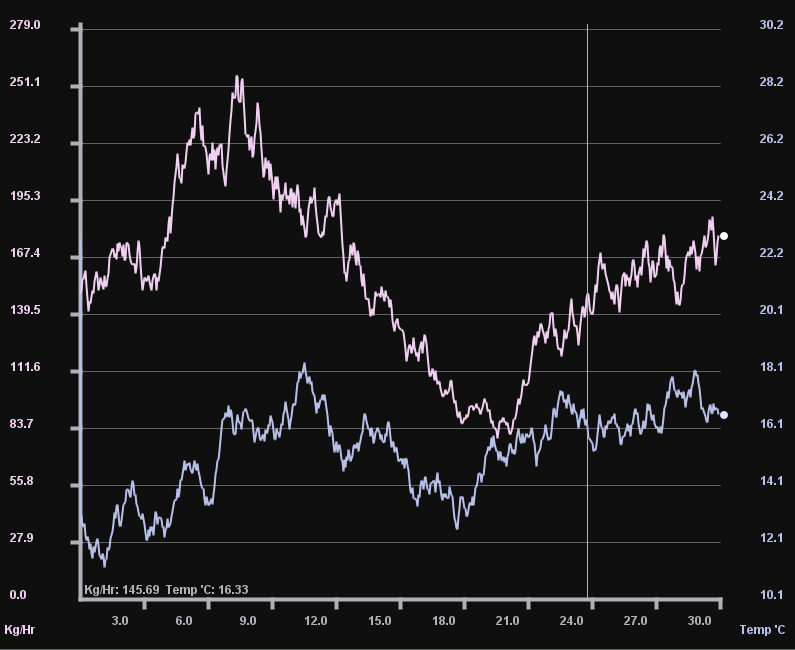
Graphing Parameters and Colors
While graphing, you will see the parameter listed as a button below the other buttons. Click on a button to change the color of the corresponding graphed parameter.
Themes
You can select from a number of different themes that change the colors and style of Buoy. You can find the theme drop-down menu on the "About" tab of the main Buoy window.
